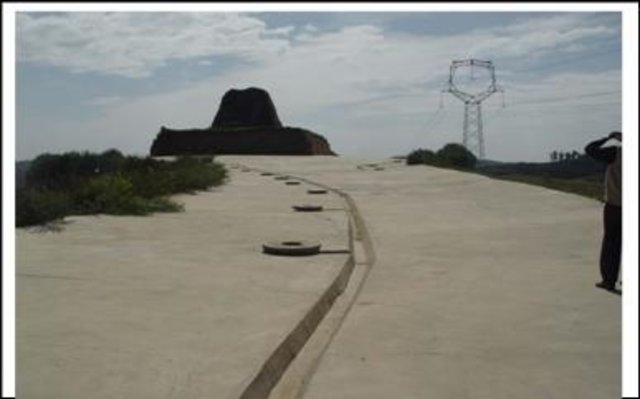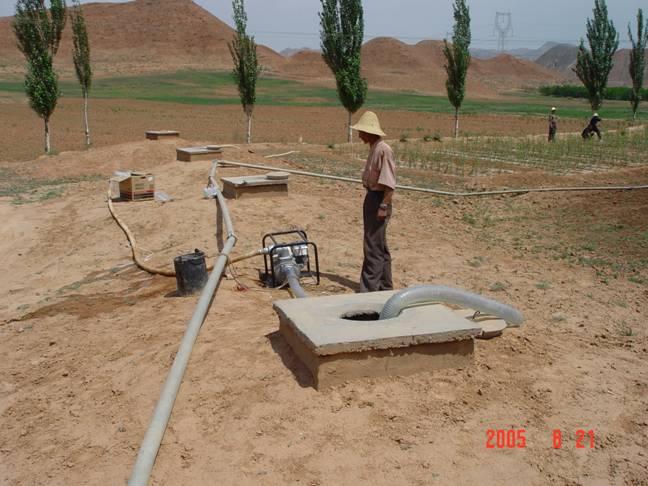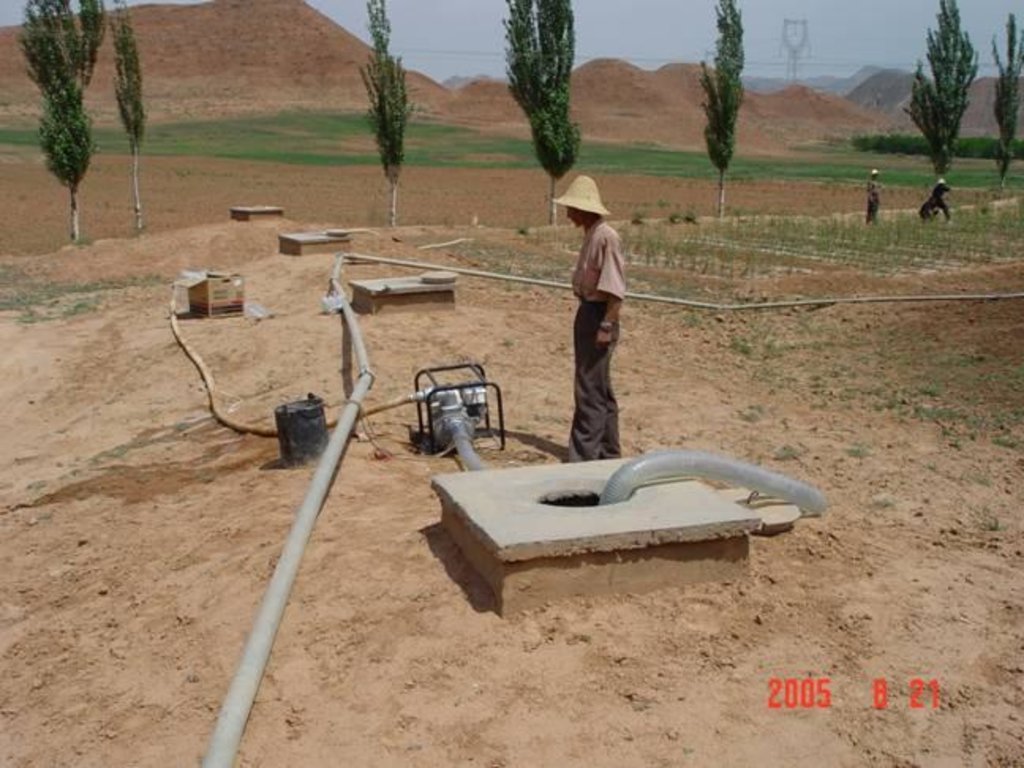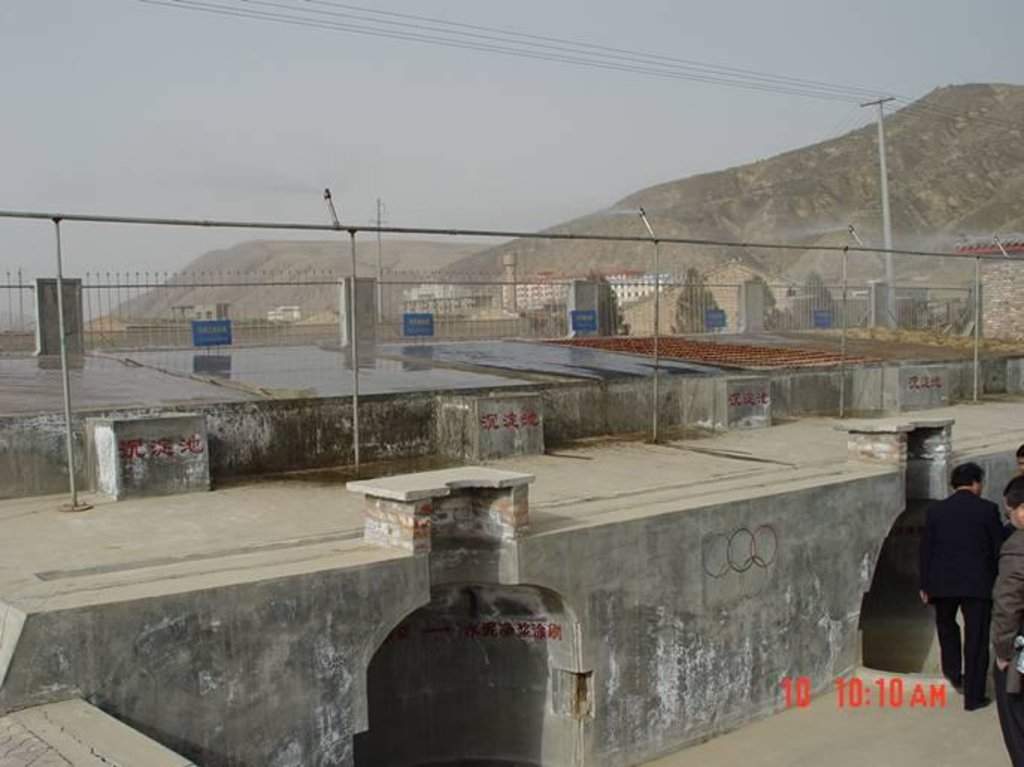Rainwater Cellars introduced through government support [China]
- Creación:
- Actualización:
- Compilador: Anna Schuler
- Editor: –
- Revisor: Laura Ebneter
approaches_2432 - China
Visualizar secciones
Expandir todo Colapsar todos1. Información general
1.2 Detalles de contacto de las personas de referencia e instituciones involucradas en la evaluación y la documentación del Enfoque
Especialista MST:
Wang Yaolin
GEF/OP12 Project Implementation Office of Gansu (Gamsu Sand Control Research Institute)
Chen Zhengbin, Forestry Bureau of Anding District, Dingxi City, Gansu Province
China
Nombre de la(s) institución(es) que facilitaron la documentación/ evaluación del Enfoque si fuera relevante)
CDE Centre for Development and Environment (CDE Centre for Development and Environment) - SuizaNombre de la(s) institución(es) que facilitaron la documentación/ evaluación del Enfoque si fuera relevante)
GEF/OP12 Gansu Project (GEF/OP12 Gansu Project) - China1.3 Condiciones referidas al uso de datos documentados mediante WOCAT
El compilador y la/s persona(s) de referencia claves aceptan las condiciones acerca del uso de los datos documentados mediante WOCAT :
Sí
1.4 Referencia/s al/los Cuestionario(s) de Tecnologías MST

Rainwater Cellars [China]
The use of courtyard, roof, road surface, slope, etc. as catchments to collect rainwater for underground water storage for future supply of cropland irrigation as well as drinking water for humans and livestock.
- Compilador: Anna Schuler
2. Descripción del Enfoque MST
2.1 Breve descripción del Enfoque
Government takes the lead and propelled by project, the rainwater collection for irrigation technology scales up by demonstration.
2.2 Descripción detallada del Enfoque MST
Descripción detallada del Enfoque MST:
Dingxi County of Gansu Province is short of water resource. There is an old saying it's hard to exchange a cup of water for a cup of oil in Anding of Dingxi. During drought years, drinking water became a crisis and people had to walk dozens of miles to get water. With no self-relief capacity the local people live a hard life. To resolve water shortage, the most realistic method is to tap into the potential of local precipitation. Under the support of the Gansu provincial government, researches on rainwater collection were conducted during the period from 1988 to 1992 and water cellar technology was proven technically and economically feasible with its functions in preventing erosion, developing arid cropland and ecosystem recovery.
In 1994, the government disseminated water cellar technology in the northwestern part of the county covering 14 townships and 4376 households. After completion, the drinking water supply problem was mitigated for 22,000 people and 8700 animals. In 1995, a severe drought hit Gansu and the provincial government immediately initiated “1-2-1 Rainwater Collection Project, under which the government supplied cement and the local people provided sand/stone and labor to build water cellars. According to this project each household should build one water catchment with an area of100m2 made by concrete cement and two water cellars and one backyard cashcrop forest. By the end of 2000, a total of 57800 households were involved in the project to provide drinking water to 60,900 people and 333,900 heads of livestock. In addition, dryland farming has seen great development. Since 1996, water cellar technology has been diversified and evolved. The water collection fields have extended from roof and courtyard to road surface, ditch, hillside, land brink, etc and the application has been widened to scale livestock farming, spot watering and conservation irrigation of farmland based on the achievement of the 1-2-1 rainwater collection project. Moreover, water cellar technology has been gradually combined with greenhouse production, tourism agriculture, etc to form a development model integrating rainwater conservation irrigation, dryland farming and improved livelihood standards.
2.3 Fotos del Enfoque
2.5 País/ región/ lugares donde el Enfoque fue aplicado
País:
China
Región/ Estado/ Provincia:
Gansu
Especifique más el lugar :
Anding
2.8 Propósitos/ objetivos principales del Enfoque
Aims are to: establish a extension mechanism that promotes sustainable development and involves farmers participation; improve the farmers' knowledge about rainwater utilization; strengthen farmer participation and their confidence in overcoming difficulties; solve drinking water problem; eliminate poverty
The SLM Approach addressed the following problems: lack of effective grass-roots organization; backward economy and lack funds; farmers in lack of the knowledge of water cellar establishment and management; short of drinking water for human and domestic animals
2.9 Condiciones que facilitan o impiden la implementación de la/s Tecnología/s aplicadas bajo el Enfoque
disponibilidad/ acceso a recursos y servicios financieros
- impiden
Found shortage: Farmers cannot afford water cellar construction
Treatment through the SLM Approach: The dissemination approaches include trial operation, demonstration, training, household visit for publicity, media (TV), technical handouts and posters. The key organizer of the extension is the water resources bureau of Anding District.
otros
- impiden
Knowledge/technology shortage: Short of knowledge of rainwater high efficiency utilization and related agricultureal technology
Treatment through the SLM Approach: Demonstration and training
3. Participación y roles de las partes interesadas involucradas
3.1 Partes interesadas involucradas en el Enfoque y sus roles
- usuarios locales de tierras/ comunidades locales
- especialistas MST/consejeros agrícolas
SWC experts
- gobierno nacional (planificadores, autoridades)
3.2 Involucramiento de los usuarios locales de tierras/ comunidades locales en las distintas fases del Enfoque
| Involucramiento de los usuarios locales de tierras/ comunidades locales | Especifique quién se involucró y describa las actividades | |
|---|---|---|
| iniciación/ motivación | apoyo externo | Meetings, household visits |
| planificación | apoyo externo | Participate in the survey and site location arrangement |
| implementación | apoyo externo | Labor input for technological implementation |
| monitoreo y evaluación | apoyo externo | Observation, collaboration with the survey of the technicians |
| Research | apoyo externo | Participate in the surveys |
3.4 La toma de decisiones en la selección de Tecnología(s) MST
Las decisiones para la selección de la/s Tecnología(s) fueron tomadas:
- Land users and decision makers
Explique:
Decisions on the method of implementing the SLM Technology were made by land users alone (self-initiative / bottom-up). Land users or village leaders decided to build water cellars.
4. Apoyo técnico, fortalecimiento institucional y gestión del conocimiento
4.1 Construcción de capacidades / capacitación
¿Se proporcionó la capacitación a usuarios de tierras/ otras partes interesadas?
Sí
Especifique quién fue capacitado:
- usuarios de tierras
Forma de capacitación:
- áreas de demostración
- reuniones públicas
- cursos
Forma de capacitación:
- publicity brochures
Temas avanzados:
water cellar building and management, irrigation etc.
4.3 Fortalecimiento institucional (desarrollo institucional)
¿Se establecieron o fortalecieron instituciones mediante el Enfoque?
- sí, moderadamente
Especifique el nivel o los niveles en los que se fortalecieron o establecieron las instituciones:
- local
- capacity building
Proporcione detalles adicionales:
the technology application strengthened the capacity building of the local water resources departments. Application of the technology helped other projects related to water conservancy and poverty reduction.
4.4 Monitoreo y evaluación
Comentarios:
There were None changes in the Technology as a result of monitoring and evaluation: The technology itself has not evolved from sole water cellar development to an assembled technology with others. The financial resources o support water cellars have been changed from sole government to social funds, moreover, the farmers would actively asks for building water cellars.
4.5 Investigación
¿La investigación formó parte del Enfoque?
Sí
Especifique los temas:
- sociología
- economía/ marketing
- ecología
Proporcione detalles adicionales e indique quién hizo la investigación:
The research is conducted by provincial level researchers on the ecological, economic, social benefits of the water cellars, mainly.
5. Financiamiento y apoyo material externo
5.1 Presupuesto anual para el componente MST del Enfoque
Comentarios (ej. fuentes principales de financiamiento/ donantes principales):
Approach costs were met by the following donors: government (Local founds): 15.0%; other: 85.0%
5.2 Apoyo financiero/material proporcionado a los usuarios de tierras
¿Los usuarios de tierras recibieron financiamiento/ apoyo material para implementar la Tecnología/ Tecnologías? :
Sí
5.3 Subsidios para insumos específicos (incluyendo mano de obra)
- construcción
| Especifique qué insumos se subsidiaron | En qué grado | Especifique los subsidios |
|---|---|---|
| concrete cement | supplied free of charge by project | |
Comentarios:
Labor force is not paid
5.4 Crédito
¿Se proporcionó crédito bajo el Enfoque para actividades MST?
Sí
Especifique las condiciones (tasa de interés el apoyo, amortización, etc.):
repayment conditions: credits are sometimes used, with interest rate similar with that of commercial loan.
6. Análisis de impacto y comentarios de conclusión
6.1 Impactos del Enfoque
the technology intercepts runoffs, solves deficiency of water resources, and raises land productivity.
Did other land users / projects adopt the Approach?
- No
- Sí, un poco
- Sí, moderadamente
- Sí, mucho
it has been adopted extensively by neighboring provinces. Chinese Women's Federation has initiated the public welfare program named 'Mothers Water Cellar' in northern China.
6.4 Fortalezas/ ventajas del Enfoque
| Fuerzas/ ventajas/ oportunidades desde la perspectiva del compilador o de otra persona de referencia clave |
|---|
| solve the problems of aridness and drinking water for human and livestock (How to sustain/ enhance this strength: continued project support) |
| strong extension mechanism (How to sustain/ enhance this strength: further strengthen the role of technical extension organizations) |
| Improve farmer's life (How to sustain/ enhance this strength: develop dryland agriculture industry) |
6.5 Debilidades/ desventajas del Enfoque y formas de sobreponerse a ellos
| Debilidades/ desventajas/ riesgos desde la perspectiva del compilador o de otra persona de referencia clave | ¿Cómo sobreponerse a ellas? |
|---|---|
| high investment for technology adoption | use of micro-credits, optimized use of farming technology for high benefit agriculture. |
| weak monitoring and evaluation | establish participatory monitoring and evaluation mechanism. |
7. Referencias y vínculos
7.1 Métodos/ fuentes de información
- visitas de campo, encuestas de campo
- entrevistas con usuarios de tierras
Vínculos y módulos
Expandir todo Colapsar todosVínculos

Rainwater Cellars [China]
The use of courtyard, roof, road surface, slope, etc. as catchments to collect rainwater for underground water storage for future supply of cropland irrigation as well as drinking water for humans and livestock.
- Compilador: Anna Schuler
Módulos
No se hallaron módulos




